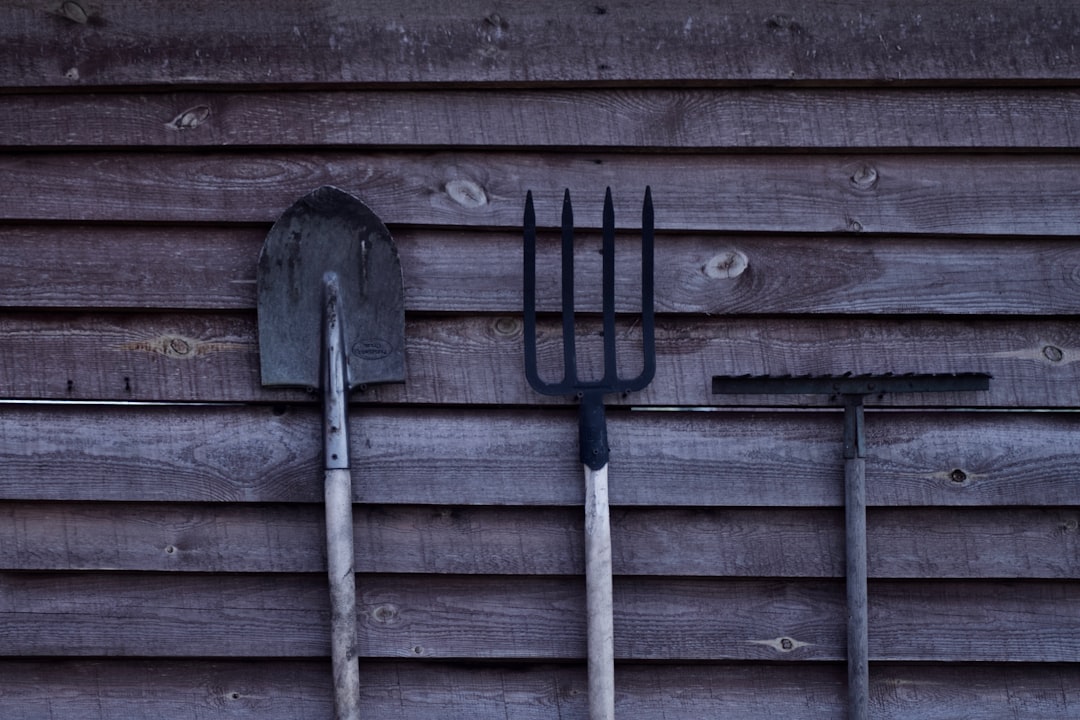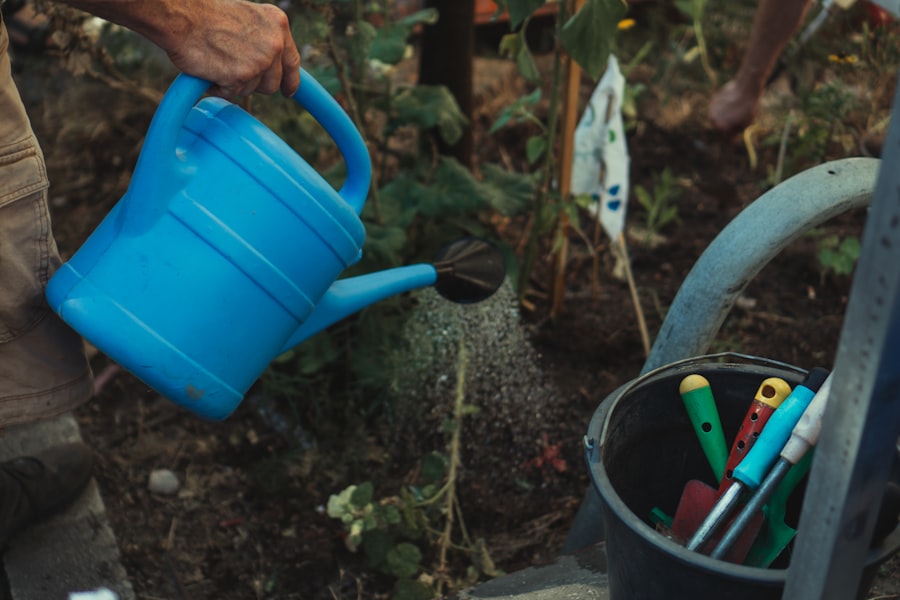Creating a Raised Bed: A Step-by-Step Guide

A raised bed is a gardening technique that involves creating a garden bed that is raised above the ground level. It is typically constructed using wooden boards or other materials to create a frame, which is then filled with soil and compost. Raised beds are becoming increasingly popular among gardeners due to their numerous benefits.
One of the main benefits of creating a raised bed garden is improved drainage. The elevated nature of the bed allows excess water to drain away more easily, preventing waterlogged soil and root rot. This is especially beneficial for plants that prefer well-drained soil, such as herbs and vegetables.
Another advantage of raised beds is that they provide better control over the soil quality. By filling the bed with a mixture of high-quality soil and compost, gardeners can ensure that their plants have access to the nutrients they need for optimal growth. This is particularly useful in areas with poor soil quality or heavy clay, as it allows gardeners to create a fertile growing environment.
Choosing the Right Location for Your Raised Bed
When choosing a location for your raised bed, there are several factors to consider. First and foremost, you’ll want to choose a spot that receives adequate sunlight. Most vegetables and herbs require at least six hours of direct sunlight per day to thrive, so it’s important to select a location that gets plenty of sun.
In addition to sunlight, you’ll also want to consider the soil requirements of your chosen plants. Some plants prefer acidic soil, while others thrive in alkaline or neutral soil. It’s important to test the pH level of your soil before planting to ensure that it is suitable for your desired plants. If necessary, you can amend the soil with lime or sulfur to adjust the pH level.
Materials Needed for Building a Raised Bed
There are several different materials you can use to build a raised bed, depending on your preferences and budget. One of the most common options is to use wooden boards, such as cedar or redwood, which are naturally resistant to rot and insect damage. These boards can be easily cut to size and screwed together to create a sturdy frame.
Another option is to use concrete blocks or bricks to build the raised bed. This can create a more permanent structure that is less susceptible to rotting or warping over time. However, it can be more labor-intensive and expensive than using wooden boards.
In addition to the materials for the frame, you’ll also need a few tools for building the raised bed. These may include a saw or power saw for cutting the boards, a drill for screwing them together, and a level to ensure that the frame is straight and level.
Building the Frame: Step-by-Step Instructions
| Step | Description | Time Required | Difficulty Level |
|---|---|---|---|
| Step 1 | Measure and cut the lumber for the frame | 1 hour | Easy |
| Step 2 | Assemble the frame using screws and a drill | 2 hours | Medium |
| Step 3 | Attach the legs to the frame | 1 hour | Easy |
| Step 4 | Sand and finish the frame | 2 hours | Hard |
Building a raised bed frame is a relatively simple process that can be completed in just a few hours. Here is a step-by-step guide to help you get started:
1. Measure and mark the desired dimensions of your raised bed on the ground using stakes and string.
2. Use a shovel or garden fork to remove any grass or weeds from the area.
3. Cut the boards to the desired length using a saw or power saw.
4. Screw the boards together at the corners to create a rectangular frame.
5. Use a level to ensure that the frame is straight and level.
6. If desired, add additional support by attaching stakes or corner brackets to the outside of the frame.
7. Place the frame in the desired location and use a shovel or garden fork to loosen the soil inside.
8. Fill the frame with a mixture of high-quality soil and compost, leaving about an inch of space at the top for watering.
Filling the Raised Bed with Soil and Compost
When filling your raised bed with soil and compost, it’s important to choose the right materials to ensure optimal plant growth. The ideal soil mixture for a raised bed is one that is well-draining, yet retains moisture and nutrients. A good ratio to aim for is 60% topsoil, 30% compost, and 10% organic matter, such as peat moss or coconut coir.
To fill the raised bed properly, start by adding a layer of gravel or small rocks at the bottom. This will help improve drainage and prevent water from pooling in the bed. Next, add a layer of cardboard or newspaper to suppress weeds and grass. Finally, fill the bed with the soil mixture, making sure to level it out and remove any large clumps or rocks.
Adding Amendments and Fertilizers for Optimal Growth

To ensure optimal growth in your raised bed garden, it’s important to add amendments and fertilizers to the soil. Amendments are substances that improve the physical properties of the soil, such as its structure or water-holding capacity. Common amendments include compost, aged manure, and vermiculite.
Fertilizers, on the other hand, are substances that provide essential nutrients to plants. They can be either organic or synthetic, depending on your preferences. Organic fertilizers are derived from natural sources, such as compost or bone meal, while synthetic fertilizers are manufactured chemically.
When applying amendments and fertilizers to your raised bed, it’s important to follow the instructions on the packaging. Over-application can lead to nutrient imbalances or even burn the plants’ roots. It’s also a good idea to periodically test the soil to ensure that it has the correct nutrient levels.
Choosing and Planting Vegetables, Herbs, and Flowers
Choosing the right plants for your raised bed garden is crucial for success. When selecting vegetables, herbs, or flowers, consider factors such as their sunlight requirements, space requirements, and compatibility with other plants.
For vegetables, popular choices for raised beds include tomatoes, peppers, lettuce, and carrots. These plants are relatively easy to grow and can produce a bountiful harvest in a small space. Herbs such as basil, rosemary, and mint are also well-suited to raised beds, as they can be easily contained and harvested as needed.
When planting in a raised bed, it’s important to give each plant enough space to grow. Overcrowding can lead to poor air circulation and increased risk of disease. Follow the spacing recommendations on the seed packet or plant label to ensure that your plants have enough room to thrive.
Watering and Maintaining your Raised Bed Garden
Proper watering is essential for the health and productivity of your raised bed garden. As a general rule, most plants in a raised bed will require about 1 inch of water per week. However, this can vary depending on factors such as temperature, humidity, and the type of plants you are growing.
To water your raised bed garden, use a soaker hose or drip irrigation system to deliver water directly to the roots of the plants. This will help prevent water waste and reduce the risk of fungal diseases. Water deeply and infrequently, rather than shallowly and frequently, to encourage deep root growth.
In addition to watering, there are several other maintenance tasks that should be performed regularly in a raised bed garden. These include weeding, pruning, and monitoring for pests and diseases. It’s also a good idea to periodically replenish the soil with compost or organic matter to maintain its fertility.
Dealing with Pests and Diseases in a Raised Bed
Like any garden, raised beds are susceptible to pests and diseases that can damage or kill your plants. Common pests in raised bed gardens include aphids, slugs, snails, and caterpillars. These pests can be controlled using organic methods such as handpicking, companion planting, or the use of natural predators.
Diseases that commonly affect raised bed gardens include powdery mildew, leaf spot, and root rot. To prevent these diseases, it’s important to practice good sanitation and avoid overwatering. If a disease does occur, it can often be treated with organic fungicides or by removing and destroying affected plants.
Harvesting and Enjoying the Fruits of Your Labor
One of the most rewarding aspects of gardening is harvesting and enjoying the fruits of your labor. When it comes to harvesting vegetables, herbs, and flowers from your raised bed garden, timing is key. Most vegetables should be harvested when they are at their peak ripeness, which can vary depending on the specific plant.
To harvest vegetables such as tomatoes or peppers, simply twist or cut the fruit from the plant when it is fully colored and firm. For leafy greens like lettuce or spinach, harvest individual leaves as needed, leaving the rest of the plant to continue growing. Herbs can be harvested by cutting off a few sprigs at a time, being careful not to remove more than one-third of the plant at once.
Once you’ve harvested your produce, there are countless ways to enjoy it in the kitchen. Vegetables can be used in salads, stir-fries, or roasted dishes. Herbs can be used to flavor soups, sauces, or marinades. Flowers can be used to decorate cakes or infused into teas. The possibilities are endless!
In conclusion, creating a raised bed garden is a rewarding and beneficial endeavor for any gardener. The numerous benefits of raised beds, such as improved drainage and better control over soil quality, make them an attractive option for growing vegetables, herbs, and flowers.
By choosing the right location for your raised bed, using high-quality materials for construction, and filling it with nutrient-rich soil and compost, you can create an ideal growing environment for your plants. Adding amendments and fertilizers, choosing the right plants, and properly maintaining your garden will ensure optimal growth and productivity.
So why wait? Start your own raised bed garden today and enjoy the many benefits of this innovative gardening technique. Whether you’re a seasoned gardener or a beginner, a raised bed garden is sure to bring joy and satisfaction as you watch your plants thrive and produce a bountiful harvest. Happy gardening!



